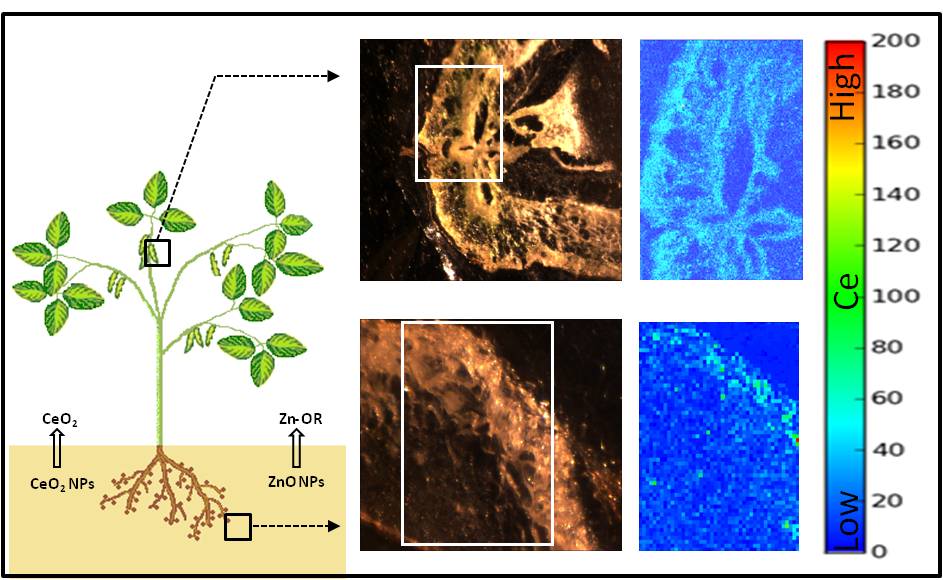
Use of Synchrotron Techniques to Study the Environmental Implications of Nanoparticles in the Environment:
The Case of Terrestrial Plants
Jorge Gardea-Torresdey
Dudley Professor of Chemistry and Environmental Science and Engineering, The University of Texas at El Paso
Thursday, February 7, 2013
3:30pm - 4:45pm
129 Debartolo

Given the widespread use of engineered nanoparticles (ENPs) in consumer goods, a large portion of these materials will soon go into the waste stream; potentially, to soil and sediments or added directly to agricultural lands via biosolids. Preliminary data from several research groups have shown that ENPs may have direct impact on food safety and the food chain. However, our knowledge about detection and characterization of ENPs in the environment, especially in terrestrial environments, is still not well understood. Synchrotron techniques are nondestructive analytical tools that can provide information about the crystal structure, elemental (chemical) composition and physical properties of the ENPs. By using the synchrotron facilities at Stanford University, Lawrence Berkeley National Laboratories, and the European Synchrotron Facility (Grenoble, France), we have obtained clear evidence of the presence of CeO2 NPs in roots of alfalfa (Medicago sativa), cucumber (Cucumis sativus), corn (Zea mays), soybean (Glycine max), and tomato (Lycopersicum esculentum)1. Other XAS studies have shown that TiO2 ENPs are absorbed by the roots and translocated to the leaves in cucumber plants; while no presence of ZnO ENPs was detected in soybean and the desert plants blue palo verde (Parkinsonia florida), tumbleweed (Salsola tragus), velvet mesquite (Prosopis juliflora-velutina) germinated and grown in ZnO ENP suspensions. Our X-ray absorption spectroscopy results demonstrated that CeO2 and TiO2 ENPs are potentially transmitted to the next plant generation, threatening the environmental and human health.
Dr. Jorge Gardea-Torresdey is the Dudley Professor of Chemistry and Environmental Science and Engineering at The University of Texas at El Paso (UTEP). He is currently the Chair of the Department Chemistry at UTEP. He received his PhD from New Mexico State University in 1988. The research interests of Dr. Gardea include: applications of spectroscopy techniques in environmental chemistry; phytoremediation, novel methods for the bioproduction of nanoparticles and study of the fate of nanoparticles in the environment, among others. His current research is funded by the US NIH, DOE, EPA, USDA, and the NSF. He has authored over 330 publications and issued 5 US patents for environmental remediation. Dr. Gardea has graduated 25 PhD. Students (21in Environmental Science and Engineering and 3 in Chemistry), and 27 students have received their M.Sc. degrees under his mentorship. The scientific contributions of Dr. Gardea have allowed him to receive many honors throughout his professional life. He received the 2009 SACNAS Distinguished Scientist of the Year Award and he was just awarded the 2012 Piper Professor Award, which is the most prestigious honor conferred to a Professor in the State of Texas. Dr. Gardea’s professional career has been highlighted by the most important Journals in Science and Engineering, including the October 28, 2009 issue of Environmental Science & Technology (ES&T) and the December 3, 2009 Issue of Nature. He was Editor of the Journal of hazardous material from 2007 to 2010 and in January 1, 2011, he was appointed Associate Editor of ES&T, which is ranked # 1 in the world in the fields of Environmental Sciences and Environmental Engineering.